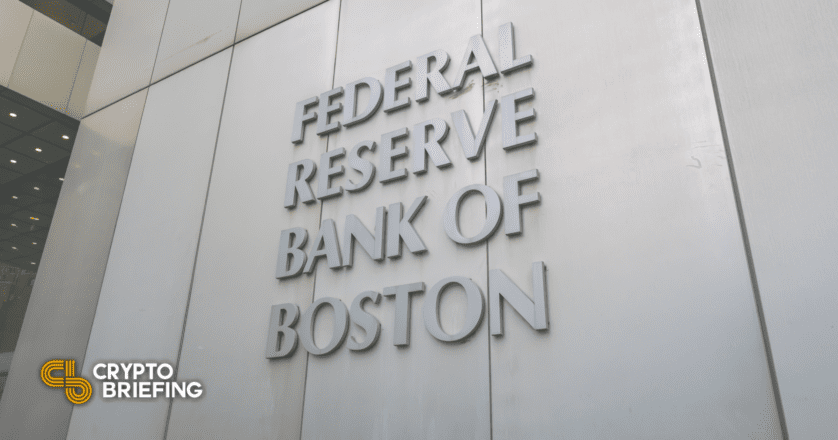Federal Reserve Bank of Boston, MIT Publish CBDC Research
The Boston Fed and MIT have released results from its CBDC project, Project Hamilton, that seeks to inform U.S. policy decisions.

Key Takeaways
- The Boston Fed, M.I.T.-run Project Hamilton has published its Phase One results.
- Project Hamilton is an effort to conduct research and build technology for a central bank digital currency.
- While the project is not directly building a USDC that would be usable in the U.S., it seeks to inform policy decisions with respect to CBDC technology.
Share this article
The Federal Reserve Bank of Boston and the Massachusetts Institute of Technology have published the results from Phase One of Project Hamilton, a multi-year collaborative research endeavor focused on CBDC research.
Phase One Complete
Earlier today, the Federal Reserve Bank of Boston and MIT published the results of Phase One of Project Hamilton, a collaborative effort to research and design a workable prototype for a CBDC that could scale to a nation the size of the United States.
It should be emphasized that no branch of the United States government has ordered the creation or implementation of a formal CBDC. However, the Federal Reserve Bank of Boston does fall under the authority of the Federal Reserve System.
Phase One sought to build a transaction processing software, dubbed OpenCBDC, that was sufficiently technically sound to function as a “general-purpose CBDC” for a nation as large as the U.S. The Boston Fed and MIT have released OpenCBDC as open-source software on GitHub.
In regard to building a core processing engine that could support a CBDC, the “team met its goal”: speeds surpassed 1.7 million transactions per second, with the “vast majority” reaching settlement finality within two seconds. The paper also reads that the technology possesses flexibility that would allow it to be adjusted depending on policy decisions.
The Boston Fed is responsible for the First District of the Federal Reserve. While the research is conducted independently of the Federal Reserve Board of Governor’s deliberations, Project Hamilton does seek to inform and enrich policy decisions surrounding a United States’ central bank digital currency. Moreover, the Fed itself does have a TechLab that also conducts CBDC research and experimentation.
User privacy is one of the project’s stated priorities when it comes to its design, though the language used suggests the privacy consideration is primarily focused on protecting users’ from third parties.
In Phase Two, the Boston Fed and MIT will research other technical designs to further optimize the Phase One technology’s “robust privacy, resiliency, and functionality,” while better elucidating tradeoffs between different designs. This phase will take years.
Project Hamilton was named after two Hamiltons: Alexander Hamilton, the U.S.’s first Treasury Secretary and primary founder of the Bank of the United States (a precursor to the Federal Reserve); and Margaret Hamilton, an engineering software director for MIT’s Instrumentation Lab that built software for NASA’s Apollo mission.
Disclosure: At the time of writing, the author of this piece owned BTC, ETH, and several other cryptocurrencies.
